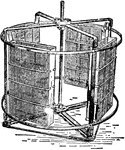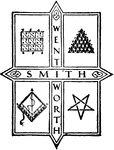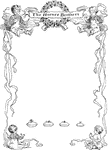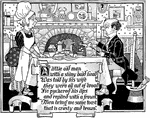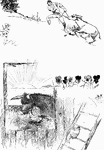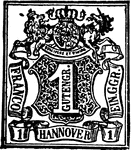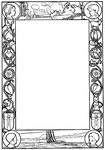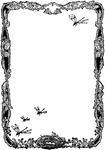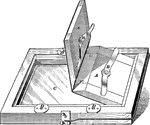
Painting Frame
"A printing frame that is well adapted to sheets not over 17 in. x 21 in. The frame is placed face downwards…
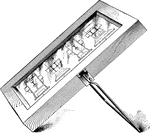
Painting Frame
"A printing frame that is well adapted to sheets not over 17 in. x 21 in. The frame is placed face downwards…

Painting Frame
"A patented frame that can be shoved out of the window and adjusted to any angle; it is made in different…
Howard's Plough
"The plough is composed of two strong iron frames balanced upon four wheels, and crossing each other…

Stewarton Hive
"A hive largely and successfully used in Scotland, it is octagonal, and the "Quinby hive" of America…

Gang Plow
Two or more plows attached to a stock or frame. Generally having wheels as a sulky plow has, with adjustable…

Harrison's Going-Ratchet
"The click barrel-ratchet R is set upon another larger ratchet-wheel, with its teeth pointing the opposite…

Gravity Train Remontoire
"E represents the scape-wheel turning in a minute, and e its pinion, which is driven by the wheel D…

Coal-cutting Machine
"This machine consists essentially of a horizontal piston and cylinder engine fixed upon a platform…

Slubbing Frame
"The operation which succeeds that of the drawing frame is slubbing, where the sliver has a certain…

Roving Frame
"This, which is the last required before the operations of spinning, strictly so called, commence, resembles…

Throstle
"The spinning frame, or throstle, is made with two sets of drawing rollers, one on each side. Between…
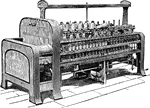
Throstle
"The spinning frame, or throstle, is made with two sets of drawing rollers, one on each side. Between…

Ball's Naturalists' Dredge
"The dredges on this pattern, used in Britain for ten years after their first introduction, about the…

Parting Vessel
"The parting vessels are of porcelain which, to protect them against fracture by irregular heating,…

Machine Gun
"Nordenfelt Machine Gun. 1-10, parts of frame; 11, breech plug; 12, striker; 13, extractor; 14, cartridge…
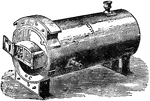
Trentham Boiler
"A very powerful and economical one, for large establishments especially. It is a modification of the…

Hosiery
"In the year 1589 the stocking-frame, the machine which mechanically produces the looped stitch in hosiery,…

Tumbler Needle
"An improvement of great importance in the hosiery trade was effected through the invention of the tumbler…
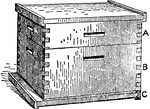
Langstroth Hive
"The typical hive of America is the improved Langstroth, which has no other covering for the frame tops…

Womans Bike
"A lady's bicycle with gear-case and dress-guard. The rear frame of the "diamond" type is subjected…

Cup-adjusting Hub
"One end of the cup-adjusting hub, with inward bearings. The cones are formed of one piece with the…

Brank
"Brank, or Branks, an instrument and formerly used in Scotland, and to some extent also in England,…

Pernot Furnace
"Pernot and Ponsard Furnaces and Allied Appliances. The pernot furnace as applied to the steel making…
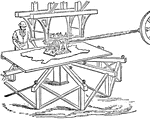
Scouring Machine
"Another machine now largely used by curriers is the scouring machine, a level table or platform freely…

Hydraulic Press
"The pump barrel, a, b, is represented as divided lengthwise, in order to show the inside. The piston,…

Morses Telegraph
"The machine itself is sufficiently simple, and will be comprehended at once, by those who have made…
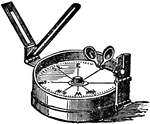
Azimuth Compass
"At sea the declination is generally observed by means of an azimuth compass invented by Kater. It consists…

Micrometer
"The horizontal section in the direction of the axis of the telescope. The eye-piece ab consists of…

Micrometer
"The vertical section in the direction of the axis of the telescope. The eye-piece ab consists of two…

Microscope
"For a laboratory microscope, the pattern represented here has been found very convienient, —the…
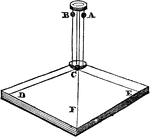
Resultant Motion with Ball
"The ball C is placed on a square frame between two upright wires, on each of which a ball slides so…

Paper Money, Eight Shillings Bill, 1777
Eight Shillings Bill (8 shillings) Pennsylvania currency from 1777. Frame, arms and value printed in…
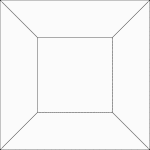
2 Concentric Squares
Illustration of 2 concentric squares whose vertices are connected by line segments.

Frame Blueprint
To make a blueprint, place the tracing in a blueprint frame with the inked side next to the glass and…
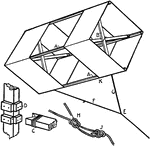
Kite
The parts of a box kite: "A, frame, with B, crosspiece; C D, details of joints; F G, bridle; E, string…

Farm Border
A decorative border with a sleeping farmer while the cow stands on the pump and the sheep play cribbage.
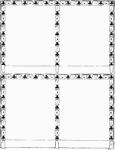
Letter and Ink Border
A decorative border of envelopes, letters, and inkwells with four windows and banners for captions.
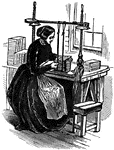
Book Binding
When binding books they are "sewed on a frame, each sheet being attached by a thread to cords across…

Manufacturing of Soap
"When the soap is properly formed, the lye is carefully separated from it, and then it is removed in…

